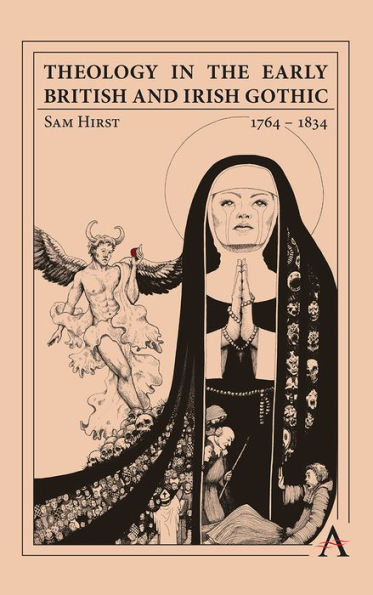Theology in the Early British and Irish Gothic, 1764-1834
Theology in the Early British and Irish Gothic, 1764–1832 reassesses the relationship between contemporary theology and the Gothic. Investigating Gothic aesthetics, depictions of the supernatural and portrayals of religious organisations, it explores how the Gothic engages with contemporary theologies, both Dissenting and Anglican. Moving away from the emphasis on either a monolithic Protestantism or on the Gothic as a secular mode, it shows the ways in which the Gothic exploration of the transcendent and the obscure cannot be separated from the diverse theologies of its day. The project maps how the Gothic not only reflects but actively engages in the theological debates and controversies contemporary to its efflorescence.
"1143265698"
Theology in the Early British and Irish Gothic, 1764-1834
Theology in the Early British and Irish Gothic, 1764–1832 reassesses the relationship between contemporary theology and the Gothic. Investigating Gothic aesthetics, depictions of the supernatural and portrayals of religious organisations, it explores how the Gothic engages with contemporary theologies, both Dissenting and Anglican. Moving away from the emphasis on either a monolithic Protestantism or on the Gothic as a secular mode, it shows the ways in which the Gothic exploration of the transcendent and the obscure cannot be separated from the diverse theologies of its day. The project maps how the Gothic not only reflects but actively engages in the theological debates and controversies contemporary to its efflorescence.
110.0
In Stock
5
1

Theology in the Early British and Irish Gothic, 1764-1834
248
Theology in the Early British and Irish Gothic, 1764-1834
248
110.0
In Stock

Product Details
| ISBN-13: | 9781839981531 |
|---|---|
| Publisher: | Anthem Press |
| Publication date: | 07/11/2023 |
| Series: | Anthem Studies in Gothic Literature |
| Pages: | 248 |
| Product dimensions: | 6.00(w) x 9.00(h) x 1.00(d) |
About the Author
From the B&N Reads Blog
